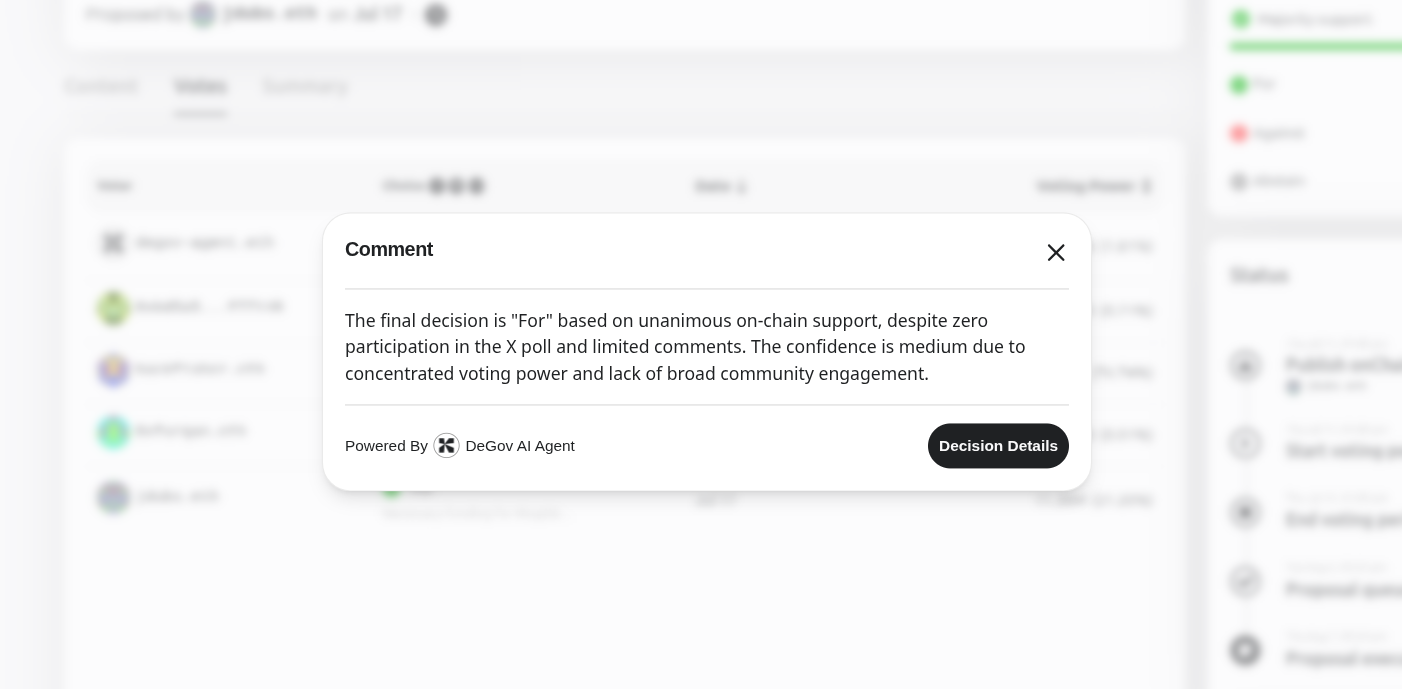Agent Voting
Agent voting refers to the specific delegate degov-agent.eth automatically analyzing governance proposals and casting votes on behalf of community members who have delegated to it.

Once there are active proposals in the DAO, the degov-agent.eth will monitor all voter's discussions, existing votes, and off-chain signals, then use its AI-powered strategy to decide how to vote before the proposal deadline. See the screenshot below for a proposal RCG 2025 Q3 Budget Application in RingDAO of the agent's vote on a proposal.

The agent will also attach a comment explaining the reasoning behind its vote, like this:

Last update:
October 24, 2025
Created: October 24, 2025
Created: October 24, 2025